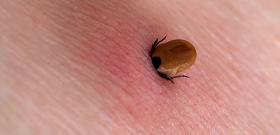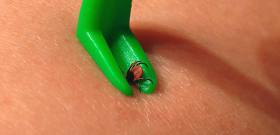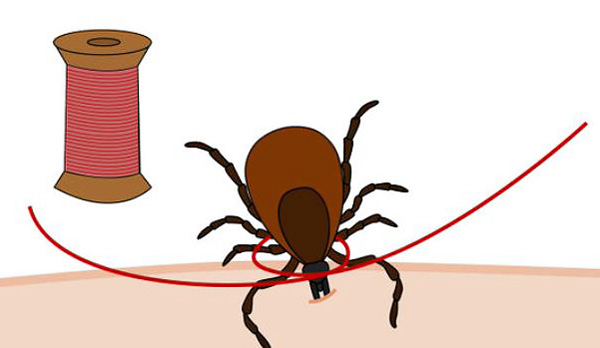
What to do if a tick has stuck to you or your pet, and there are no special tools at hand to remove it? Let's talk about how you can pull a tick with a thread. Yes, such a procedure is indeed possible, and it is much easier and safer than trying to remove the parasite with "folk remedies", and in time it will take only a few seconds. In the meantime, let's take a look at other effective methods for getting these nasty arachnids out and discuss popular misconceptions about this problem.
It is necessary to remove attached parasites immediately after their discovery, since in the process of feeding they continue to secrete saliva into the wound, which may contain pathogens of dangerous diseases. And the longer the tick feeds, the more bacteria or viruses enter the blood of the victim. Therefore, you should not wait until the tick gets drunk on blood and disappears on its own, because the feeding process can take several days.
It's important to know
Tick saliva often contains dangerous viruses and bacteria that cause diseases such as tick-borne borreliosis (Lyme disease), tick-borne encephalitis, and many others. These diseases can result in disability or even death. And if about 6% of parasites are infected with the tick-borne encephalitis virus, then the probability of picking up a bloodsucker-carrier of Lyme disease in some regions is up to 90%.
How not to remove ticks
When a person notices a tick that has stuck on himself, on a dog after a walk, or on a domestic cat (you can bring the parasite on clothes), his first desire is to quickly pull out or crush this unpleasant arachnid. But you need to refrain from such a mistake - in a hurry, you can easily tear off the body of the bloodsucker from the head that is firmly held in the wound. Also, you can not press and squeeze the attached tick with your fingers, because a large amount of saliva will immediately be released into the wound, which may be infected.
In addition, it must be remembered that common "folk methods" of extracting a tick - for example, cauterize the parasite with a cigarette or suffocate it by anointing it with oil, gasoline or varnish - are ineffective. It is believed that due to the inconvenience caused, the arachnid should become worried and release the victim itself. However, these methods of pulling out the parasite do not work, because a hungry tick will not unhook, and having lost access to oxygen, it will simply die right in the wound.
The often recommended method of extracting a tick with a vacuum is also not effective. It is usually advised to cut off the nose of a plastic syringe, press it against the parasite and pull out the plunger. At the same time, by pressing the thin walls of the syringe, the skin is injured, a hematoma is formed due to the vacuum, and the tick continues to suck blood without problems - the resulting vacuum is too small to pull it out.

Removing the tick with a syringe does not give positive results.
And if you apply this method several times in a row, the opposite effect will occur: the contents of the arachnid will be driven into the wound.
Why is the parasite holding on so tightly?
Due to the special structure of the oral apparatus, the tick is very firmly fixed in the wound.On the head of the parasite, called the gnathosoma, there are pedipalps, chelicerae hidden in cases, and a proboscis, which is called the hypostome. It is an elongated plate covered with rows of teeth directed with their sharp edges to the base of the proboscis.
During the bite, the bloodsucker cuts through the skin with chelicerae, at the same time introducing a proboscis into the wound, which also takes part in cutting the skin. Thus, inside the wound there is both a hypostome, the teeth of which act as harpoons, and chelicerae, the spikes on the sheaths of which serve as additional fastening.
It is interesting
The saliva of the tick, which continuously flows into the wound, has an anesthetic effect, which is why the victim does not experience pain and does not notice the bite of the parasite. Therefore, it is important to conduct a careful examination of the whole body after walking in nature, remembering that bloodsuckers love secluded places behind the ears, in the armpits, in the groin and in the folds of the skin.
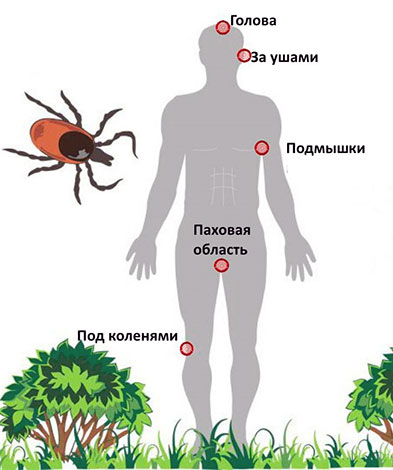
Locations of the most common tick bites.
In addition, a case of saliva is formed around the hypostome, which, spreading in the lower layers of the skin, hardens after a while. It turns out a design that serves as a strong anchor - because its base is wider than the hole in the skin. But not all types of parasites have this ability: for example, the most common taiga and dog ticks in Russia do not have this ability.
Thus, the entire device of the tick's mouth apparatus is aimed at maximum protection against attempts to tear off the arachnid from the victim's body, and the longer the parasite feeds, the more firmly it is fixed in the wound.
Klescheder: nuances of application
The most convenient way to remove the parasite in nature or at home is to use a tick, or extractor. This tool can be of different shapes and sizes. The most popular model is similar to a small nail puller and is a small V-shaped hook. It must be pressed tightly against the skin, capturing the groove of the tick. After several gentle rotations of the device around the vertical axis, the parasite easily falls out of the skin.
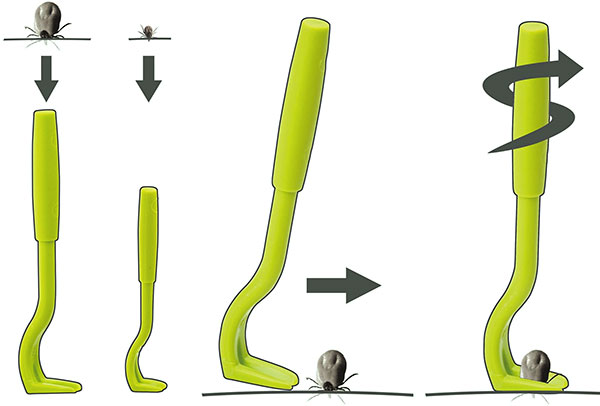
The ticker is one of the most effective tools for extracting a tick.
In addition to the hooks described above, flat keys, spoons, lasso handles, special tweezers, and many other devices have been invented to pull out ticks. The principle of their operation is similar: a groove, cutout or loop is fixed on the tick's head, and then, making several turns with the handle, the parasite is pulled out of the victim's body. Thanks to different sizes and devices, these devices allow you to quickly and easily remove the arachnid that has stuck to a person, dog, cat and any other animal, even in the most inaccessible places.
When removing the parasite, it is important to remember the main principle: do not pull, but twist. This is due to the peculiarities of its fixation in the wound, described in the previous section. Holding in this way, the tick is reliably protected from simple pulling. And twisting destroys the grip of the proboscis with skin tissues or with a case of saliva. At the same time, it is important to fix the ticker on the head of the parasite and rotate it, otherwise you can simply tear off the body of the tick from its head.
Removing a tick with a thread
Alas, the tick can be easily lost, or it simply may not be at hand at the right time. Therefore, you need to know that the tick can be pulled out with a simple thread.This is a very easy operation that will take less than a minute.
In order to get the parasite, any thread will do, even torn from the edge of the clothes, but you need to remember that it will be harder to handle with a thick thread and you can accidentally crush the bloodsucker with it. The length of the thread should be such that after it is folded in half, there is enough room for the fingers. 10-20 cm is the optimal size.
A simple knot is tied in the middle of the thread, but it is not completely tightened. The resulting loop, like a lasso, is thrown over the tick. You should try to place it on the head of the parasite as close as possible to the bite site. Or you can simply circle the thread around the head of the bloodsucker, and then tie it.

The loop from the thread must be placed at the point of articulation of the head of the tick with its body.
After that, the knot is tightened, and the free ends of the thread are folded together. Now they need to be twisted with your fingers into a tourniquet. When the ends of the thread are tightly twisted together, they will begin to twist the tick. You can gently pull on the thread, but this is usually not necessary, as the parasite easily falls out on its own. Just two or three turns are enough - and the tick is removed!
It is interesting
It does not matter which way to turn the ticker or thread. The tick's mouth apparatus is symmetrical, it has no thread. And the popular advice to turn the parasite clockwise is due to the fact that it is simply more convenient to do it with the right hand.
Other ways to extract a tick
You can easily make a homemade ticker from improvised materials, for example, from a stick. Its end must be made flat and a wedge-shaped groove cut out in it. Such a device is used as a flat key-extractor.
A similar device can be cut from part of a plastic bottle or tin. A bread bag clip also works well for this.
You can also remove a tick with ordinary tweezers. In this case, you need to be able to grab onto the arachnid's head, otherwise you will crush the parasite. It is very important to turn the tweezers without loosening the clamp, otherwise the tick will “unwind” back. In addition, it can be difficult to re-capture it, and the bloodsucker will be crushed when trying to do it.
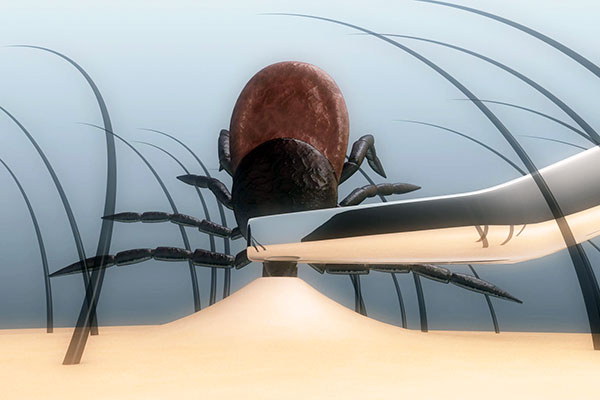
Using the most ordinary tweezers, you can also remove the tick.
You can also pull out the parasite with your bare hands, especially if it has managed to pump blood and has greatly increased in size. It is important to pick it up with your nails just behind the gnathosoma and gently unscrew it. However, this is difficult to do with nymphs and ticks that have drunk little blood. At the same time, there is also a great risk of compressing the body of the arachnid and squeezing a large portion of saliva into the wound.
If the head of the tick still comes off and remains in the skin, there is no need to panic. It can be removed, like a regular splinter, with tweezers, a needle or nails. Leaving the gnathosoma in the wound will fester and come out on its own, but this is not the best option, since in this case there is a greater risk of contracting tick-borne infections.
What is important to do immediately after removing the tick
After extracting the parasite, the bite site must be treated with any antiseptic. Suitable chlorhexidine, "brilliant green", iodine, alcohol or miramistin. This will not reduce the chance of contracting tick-borne infections, but it will help to avoid inflammation of the wound. A bandage or patch is not needed, and you should not squeeze out blood or pick at the affected area - this will only contribute to the spread of infectious agents deep into the tissues.
An itchy patch may appear at the site of the bite. In this case, it is recommended to lubricate it with an anesthetic ointment (Menovazan, Lidocaine). And if signs of allergy appear, you should take an antihistamine, for example, Suprastin.

Antihistamines, sometimes used in cases of allergies after vermin bites.
If the attack of the parasite occurred in an epidemiologically disadvantaged region for tick-borne infections, it must be taken to the laboratory for analysis. Addresses and phone numbers of such laboratories can be found in hospitals, emergency rooms or by calling the ambulance number. First of all, the arachnid is checked for infection with tick-borne encephalitis, in addition, a study can also be carried out for borreliosis.
On a note
Every year, Rospotrebnadzor registers cases of infection with tick-borne encephalitis and compiles lists of regions endemic for this disease. From year to year, Buryatia, Altai, Perm and Krasnoyarsk Territories, Tomsk, Sverdlovsk, Tyumen and Novosibirsk regions are leading in this list. And the least cases of infection were noted in Murmansk, the Nenets Autonomous Okrug, the Kamchatka Territory and the North Caucasus.
It is advisable to keep the arachnid alive by placing it in an airtight container with a damp piece of cotton wool. If the tick is dead, its remains are also suitable for analysis - you can detect the infection within 2-3 days after the death of the bloodsucker, but you do not need to freeze or alcohol them. These actions will greatly complicate the study or even make it impossible.
It's important to know
If the parasite attack has occurred in an endemic area and human immunoglobulin serum against tick-borne encephalitis is available in the medical facility, then it will be administered as a prophylaxis until tick analysis data is available. This prophylaxis is carried out in the first 4 days after the bite, it is most effective in the first two days, and from the fifth it becomes meaningless.
The incubation period for tick-borne encephalitis and borreliosis can range from a week to several months. It is important for at least a month to monitor the well-being of the bitten. Warning signs include: high fever, pain in the head and muscles, nausea, convulsions, incoordination, loss of consciousness, tissue swelling and pain at the bite site.
The most characteristic symptom of Lyme disease is erythema migrans. It is an expanding reddening of the skin in the form of a ring around the bite site.
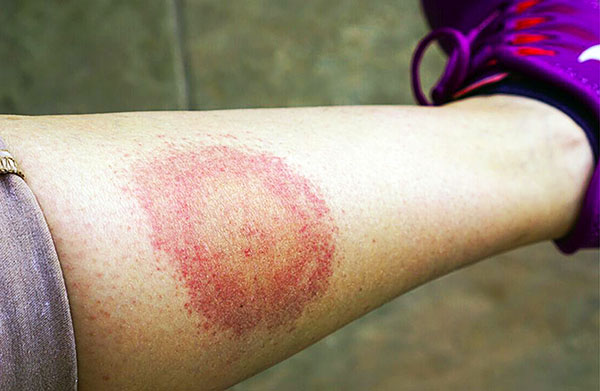
A symptom characteristic of Lyme borreliosis is reddening of the skin in the form of a ring near the site of the tick bite.
On a note
There is no emergency prevention of tick-borne borreliosis, but it is successfully treated with a course of antibiotics and, with timely access to an infectious disease specialist, passes without consequences.
Let's summarize. When a tick is found, the following main principles of its extraction should be remembered:
- You need to pull out the arachnid immediately after its discovery;
- Do not squeeze the parasite, do not tear or try to kill it in the wound;
- Try to get the whole tick and keep it alive. Remember that it should be twisted, not pulled out;
- Disinfect the wound;
- Submit a tick for analysis;
- Monitor the well-being of the victim for a month.
Useful video about extracting a tick with a thread

